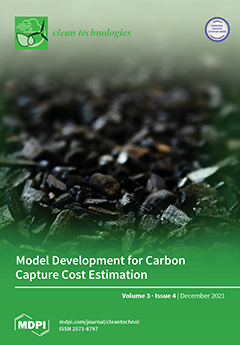Dimethyl carbonate (DMC) and glycidol are considered industrially important chemical entities and there is a great benefit if these moieties can be synthesized from biomass-derived feedstocks such as glycerol or its derivatives. In this report, both DMC and glycidol were synthesized in an integrated process from glycerol derived 1,3-dichloro-2-propanol and CO
2 through a metal-free reaction approach and at mild reaction conditions. Initially, the chlorinated cyclic carbonate, i.e., 3-chloro-1,2-propylenecarbonate was synthesized using the equivalent interaction of organic superbase 1,8-diazabicyclo [5.4.0] undec-7-ene (DBU) and 1,3-dichloro-2-propanol with CO
2 at room temperature. Further, DMC and glycidol were synthesized by the base-catalyzed transesterification of 3-chloro-1,2-propylenecarbonate using DBU in methanol. The synthesis of 3-chloro-1,2-propylenecarbonate was performed in different solvents such as dimethyl sulfoxide (DMSO) and 2-methyltetrahydrofuran (2-Me-THF). In this case, 2-Me-THF further facilitated an easy separation of the product where a 97% recovery of the 3-chloro-1,2-propylenecarbonate was obtained compared to 63% with DMSO. The use of DBU as the base in the transformation of 3-chloro-1,2-propylenecarbonate further facilitates the conversion of the 3-chloro-1,2 propandiol that forms in situ during the transesterification process. Hence, in this synthetic approach, DBU not only eased the CO
2 capture and served as a base catalyst in the transesterification process, but it also performed as a reservoir for chloride ions, which further facilitates the synthesis of 3-chloro-1,2-propylenecarbonate and glycidol in the overall process. The separation of the reaction components proceeded through the solvent extraction technique where a 93 and 89% recovery of the DMC and glycidol, respectively, were obtained. The DBU superbase was recovered from its chlorinated salt, [DBUH][Cl], via a neutralization technique. The progress of the reactions as well as the purity of the recovered chemical species was confirmed by means of the NMR analysis technique. Hence, a single base, as well as a renewable solvent comprising an integrated process approach was carried out under mild reaction conditions where CO
2 sequestration along with industrially important chemicals such as dimethyl carbonate and glycidol were synthesized.
Full article





